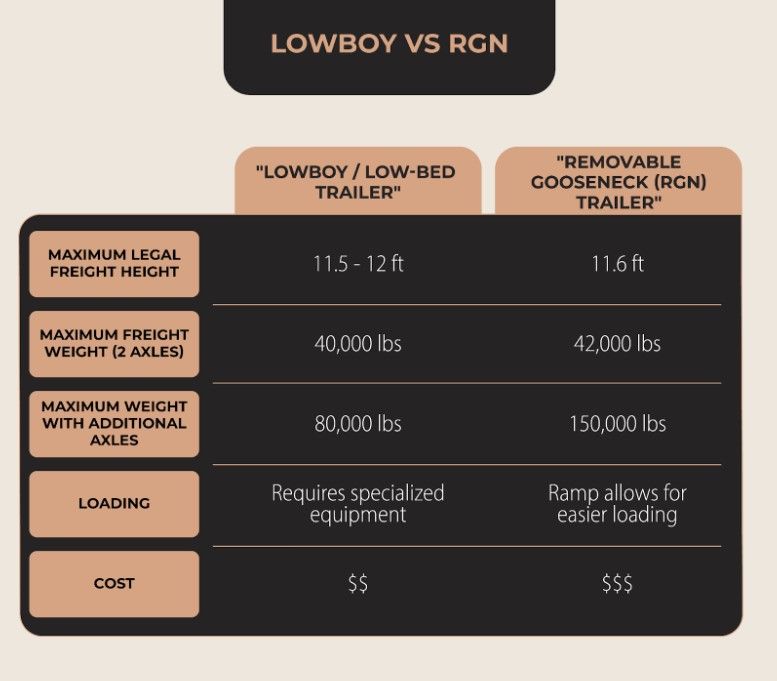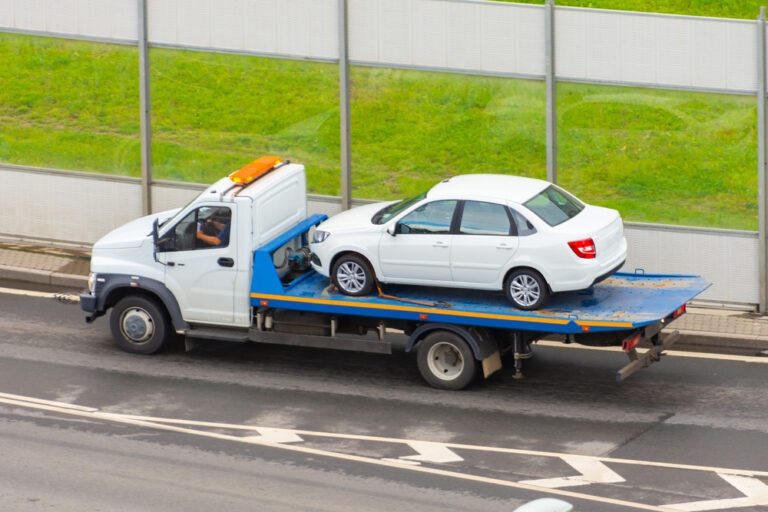
Differences Between Lowboy & RGN Trailers
Have you ever watched in awe as you pass a long, flat trailer with an “Oversize Load” sign transporting a massive piece of construction equipment or something even more colossal and wondered how a simple trailer could carry such a heavy load?
At ShipLux, we know the answer. That’s why we specialize in shipping Heavy Equipment.
Do you have an oversized load that you need to transport but have no idea how to move it or where to get the appropriate equipment?
You don’t have to worry about that—here at ShipLux, we can take care of all of your heavy equipment shipping needs.
So how do we do it? We stay up-to-date on all the regulations and requirements needed to haul even the heaviest loads. Our shipping experts also understand the differences between Lowboy and RGN trailers—the heavy haul trailers for any large load. This enables us to select the best equipment for even the tallest and heaviest cargo.
Read on to learn more.
What is a Lowboy Trailer?
Sometimes called a low-bed trailer, float, or low-loader, Lowboy trailers are a type of transport platform introduced in the 1920s as an option for hauling oversized freight. (Curiosity piqued? Check out this article on the “History of Heavy Haul”).
What’s unique about a Lowboy?
Lowboy trailers have one drop after the gooseneck (the projecting front end that connects the trailer to the truck’s cab.)
Lowboy trailers are usually loaded from the back or the side and sometimes require additional equipment for loading and unloading.
A two-axle lowboy can support 40,000 pounds. Adding more axels increases the weight limit to up to 80,000 pounds making it possible to move heavier equipment without extra permitting.
The length of a lowboy ranges from 24 feet to 29.6 feet. Large construction bulldozers can easily fit.
In addition, lowboys often have a drop-down feature that enables them to carry taller cargo. Lowboy trailers can legally carry taller cargo than flatbeds.
Ship Heavy Equipment on a Lowboy Trailer with ShipLux.
What is A Removable Gooseneck Trailer (RGN)?
RGNs entered the transport industry in 1958, designed to carry long and tall cargo.
What’s unique about an RGN?
The removable gooseneck makes it easier to load and unload. When the gooseneck is removed, the trailer can be lowered to the ground to create a ramp. Large vehicles or equipment like a bulldozer can be driven right onto the trailer, without any additional equipment.
Removable Gooseneck Trailers can have as many as 20 axles or more to support up to 150,000 pounds. The typical length of the main deck is 29 feet, meaning that RGNs are ideal for transporting the largest equipment, including cranes and agricultural combines.
Ship Heavy Equipment on a Removable Gooseneck Trailer with ShipLux.
Which One Should I Choose?
Ultimately, that comes down to the specific cargo that needs to be shipped. The good news is that our expert team of shipping professionals will figure out all of the logistics with you in a no-obligation, guaranteed-transparent price quote. No matter the weight or dimensions of your heavy equipment, we have the trailer to move it.
Here’s a side-by-side comparison:

Need to Move Heavy Equipment? Call ShipLux
If you’re researching shipping companies to determine who can move your heavy equipment, give ShipLux a call – or text, email, IM, or live chat! With our omni-channel communication platform and 24/365 customer service, our shipping specialists are standing by to answer your questions in just about any medium except carrier pigeon (though that may change once we finally get these birds trained…)
How do you know when you’ve found the right vehicle transport company for your heavy equipment move? For each company, compare price quotes, reputation, and equipment – and most of all, communication. Think of the price quote experience as a preview of the kind of response you’ll get during transport. You want a company who keeps you updated and answers all of your questions throughout the process.Contact us today! Start by telling us what you’re shipping and where it has to go, and you can leave the rest to ShipLux.
Recent post

General Shipping Information
Debunking Common Vehicle Transport ...

Car Shipping